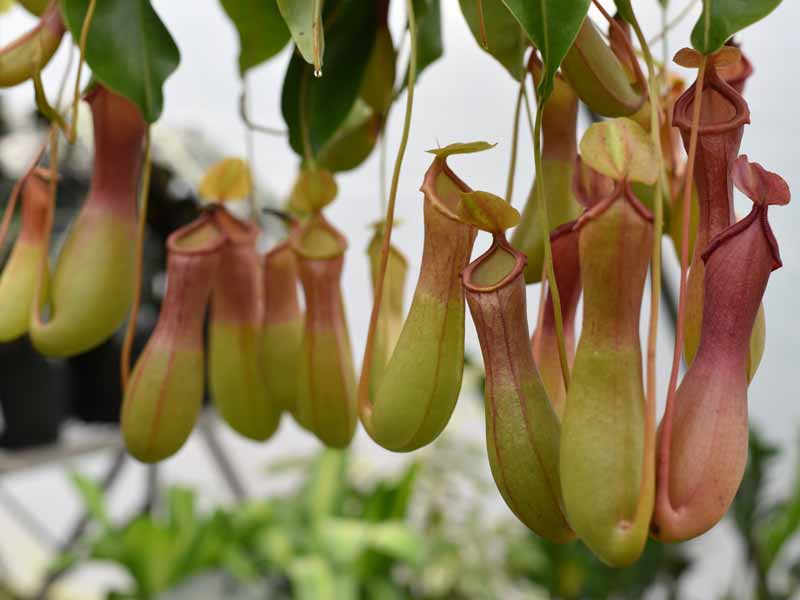Care and Morphology of Carnivorous Plants NEPENTHES

Care and Morphology of Carnivorous Plants NEPENTHES
Carnivorous plants are fascinating and exotic, and one of the best known is Nepenthes. These plants have a unique morphology and require special care to grow and thrive properly. In this article, we will explore the basic care that you should take into account if you decide to have a carnivorous Nepenthes plant in your home.
Morphology of Carnivorous Plants Nepenthes
The morphology of Nepenthes carnivorous plants is really interesting and adapted to capture and digest insects. These plants have modified leaves called "urns" or "ascidians," which are pitcher-shaped structures that contain digestive fluid. The urns have an opening at the top and are covered with villi that act as traps for insects.
The digestive fluid inside the urns contains enzymes that break down the captured insects, providing the plant with the nutrients it needs to survive in nutrient-poor soils. Nepenthes also have a variety of colors and urn shapes, making them even more attractive to plant collectors.
Carnivorous Nepenthes Plant Care
Carnivorous Nepenthes plants require specific care to grow and stay healthy. Here are some basic tips you should follow:
1.light
Nepenthes need an adequate amount of light to grow properly. Place them in a location where they will receive bright light, but avoid direct sunlight for long periods, as this can damage the leaves. A good option is to place them near a window facing east or west.
2. Temperature and Humidity
These plants are native to tropical and subtropical regions, so they need relatively high temperature and humidity to thrive. Keep the temperature between 20°C and 30°C during the day and between 10°C and 20°C at night. Also, be sure to provide them with high ambient humidity, either by placing the plant in a dish of water or using a humidifier.
3. water
Nepenthes are aquatic plants and need a constant supply of water. Water the plant regularly to keep the substrate moist, but avoid waterlogging it. Use distilled, rain or demineralized water, as these plants are sensitive to the minerals and chemicals present in tap water.
4. Substrate
The substrate for carnivorous Nepenthes plants should be light and well-drained. A combined mix used is sphagnum peat moss mixed with perlite or coarse sand. Avoid using soil-based substrates as they retain too much moisture and can cause root rot.
5. Food
Although Nepenthes are carnivorous plants, it is not necessary to feed them directly. They will catch insects for themselves. However, if you want to speed up their growth, you can occasionally feed them small insects such as fruit flies or mosquitoes.
6. pruning
Perform regular pruning to keep the plant in good condition. Remove dry or damaged leaves to prevent the spread of disease and to allow the plant to use its energy in growing new leaves and urns.
7. Winter rest
Some Nepenthes species require a winter rest period. During this time, the plant may grow more slowly or even stop growing altogether. Reduce the frequency of watering and keep the plant in a cool place during this period.
In short, carnivorous Nepenthes plants are fascinating and beautiful, but they require specific care to grow and thrive. Follow these basic tips and enjoy having one of these incredible plants in your home.
Leave a Reply
You must be logged in to post a comment.